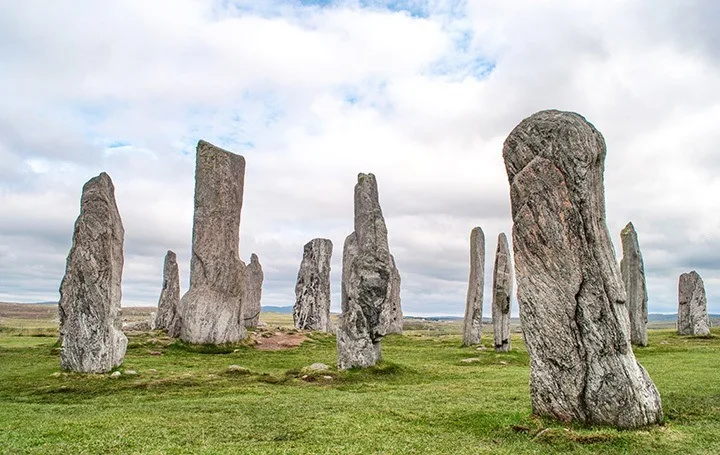
History is all around you on the Isle of Lewis in Scotland’s Outer Hebrides, and no where more so than on the island’s west coast. The road that runs along the coast takes you though some stunning scenery. But it’s also a journey through the different eras of the island’s 5000-year history. Within 16 miles you can travel through 4000 years, from modern island life way back to Neolithic times – but what’s along the way?
The Arnol Blackhouse
Our first stop at the Arnol Blackhouse took us back just over a century. Blackhouses are traditional stone houses where crofting families lived with their animals. They were built to withstand the harsh Hebridean winters. So they’re low to the ground with thick walls insulated with peat and earth, and a heather and straw thatched roof. At first sight the blackhouse could be centuries old, but in fact the last people living here only moved out in 1966. No 42 is the last blackhouse left in Arnol and it’s preserved just as it was when the family moved out. It’s a snapshot of a unique way of life that’s now passed into history.
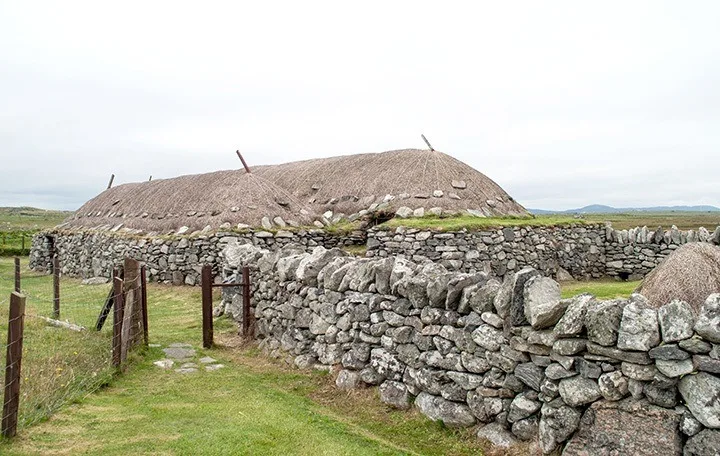
Blackhouse no 42
The first thing you notice when you duck through the low door into the blackhouse is the smoke. Thick peaty smoke fills the air, and pretty soon your lungs too. The kitchen was the centre of the house and the fire was the centre of the kitchen. The Gaelic word for the room ‘aig en teine’ means ‘at the fire’. The fire was never allowed to go out and was where the family would eat and socialise. There’s no chimney so smoke quickly fills the house, but it kills any bugs in the roof and old sooty thatch makes good fertiliser.
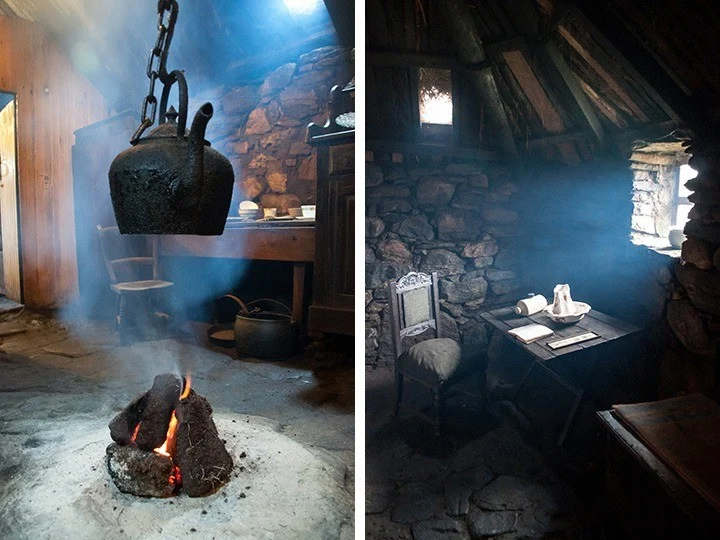
Inside the blackhouse
The second thing you notice is the darkness. The doors and small windows are the only sources of natural light. But as your eyes become accustomed to the dark (and stop watering from the smoke) a cosy home emerges, with wallpapered walls, wooden box beds and dressers full of crockery. The family lived here for 80 years until new regulations meant crofters had to separate their homes from their animals. So they started building more modern ‘whitehouses’ instead. Wandering around the museum’s 1920s whitehouse you can’t imagine what a change it would’ve been – a whole new way of life not just a new place to live.
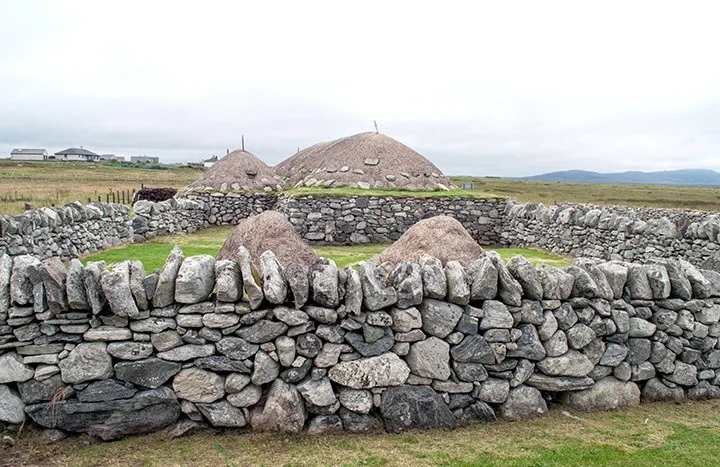
The last of an old way of life
The Dun Carloway Broch
A few more miles along the coast took us a lot further back in time to the first century AD at the Dun Carloway Broch. Brochs are a type of drystone-walled Iron Age tower that’s are only found in Scotland. Historians think they were built as defensive fortifications. Or maybe they were the stately homes of their day, built to show off the owner’s wealth and power? The truth about their origin is still a bit of a mystery, but either way Dun Carloway is one of the best-preserved brochs in the country.
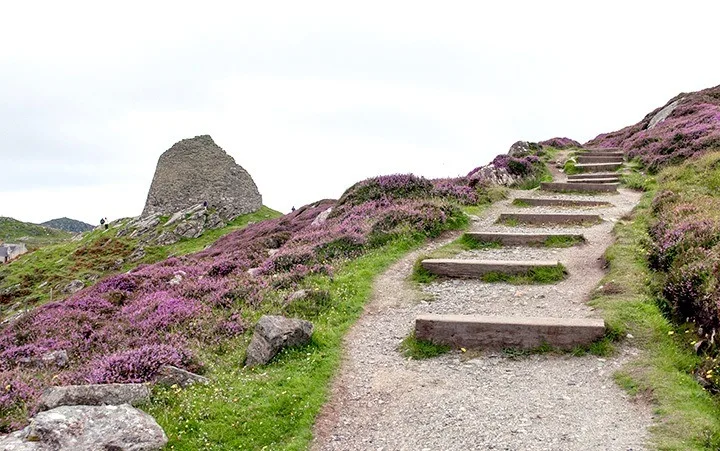
The pathway to the Broch
To reach the broch you climb up a pathway up through the heather. Its hilltop location makes it an imposing sight, and it must have been even more so when it was at its full 13-metre height. The original conical roof and the wooden floors are long gone, but the skillfully built walls have lasted the distance. There were multiple floors with the animals living down below and the people above them. One side has fallen away so it’s almost like a cross-section cutaway where you can see what lies underneath.
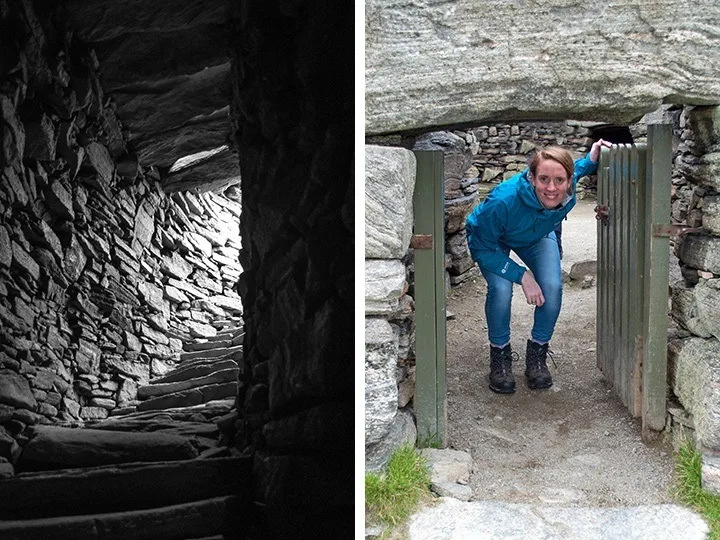
Inside the broch
If you duck down you can climb inside and scramble through the old doorways and the narrow gap between the two layers of wall (though watch your head – I speak from experience!). There was originally just the one tiny doorway where a guard would sit to make sure there were no surprise attacks. Years later the broch was used as a watchtower for defence against a Viking invasion, and people living in it as recently as the 1870s. But now Historic Scotland have taken over ownership and are preserving it for the future.
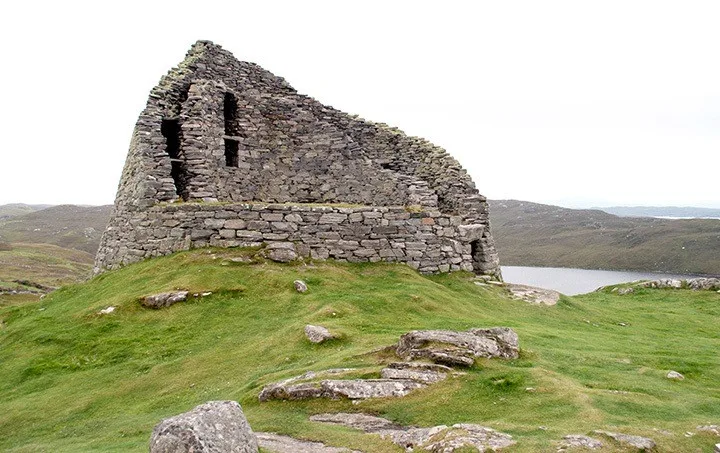
The ruins of the broch
The Callanish Standing Stones
The Iron Age might seem like a very long time ago, but the Callanish Standing Stones are over twice as old. If you’ve been to Stonehenge and peered across the rope barrier, then these stones are older, more impressive and you can go right up to them run your hands across their rough surface. Each stone is a different shape and size, cut and moved here by hand 4000 years ago. Why they were put here is another mystery though – was the site an astronomical observatory or maybe a place of worship?
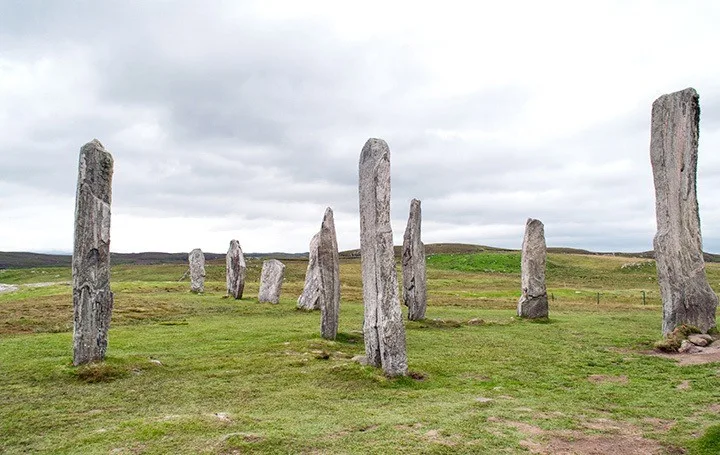
The Callanish stones
There are actually 20 different monuments around Callanish, and an extension to the stones known as Callanish VII on the neighbouring island of Great Bernera, located off the west coast of the Isle of Lewis.
The biggest is the group of 50 stones near the visitors centre. It looks like a circle with lines of stones radiating out, but from the air you can see they form the shape of a Celtic cross. Some stones are big thick slabs of rock over 15 feet tall and others are thin, delicate pieces that look like you could just push them over. But they’ve all stood here for thousands of years and made it through invasions, wars and winter storms. Now that’s serious staying power.
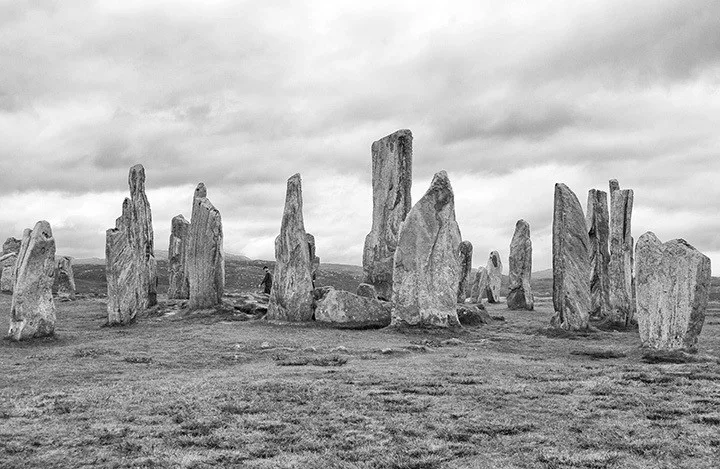
The main stone circle
The details
The Arnol Blackhouse is open from Monday to Saturday, 9.30am–5.30pm (10am–4pm and closed Wednesday and Sunday from October–April). Entry costs £5 for adults, £4 for over 60s and £3 for children aged 5–15. The Dun Carloway Broch and Callanish Standing Stones are both free to enter. Dun Carloway Visitor Centre is open 10am–5pm from April to September. Calanais Visitor Centre and café is open Monday to Saturday from 9.30am–8pm from June–August (10am–6pm in spring/autumn and closed Mondays in winter).

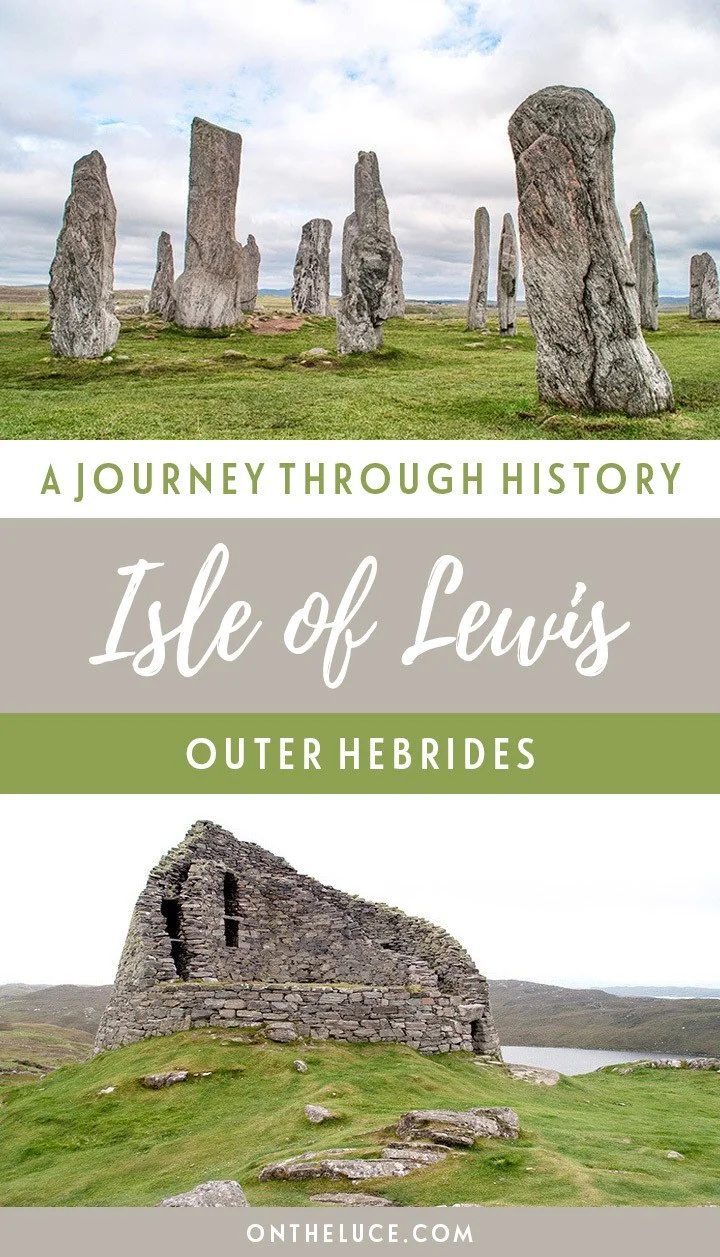
Karen
Tuesday 11th of January 2022
I am visiting Harris in July with my dog. Would you say the island + the visitor attractions are dog friendly?